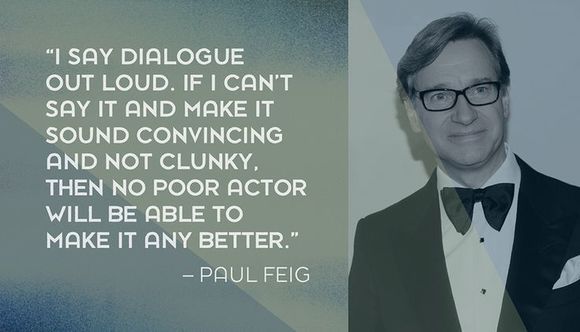By Sara Peters
A dialogue is a written or spoken conversation between two or more people. Most of us have many dialogues daily. With all the real life experience we get, it seems like writing dialogue would be as easy as making toast! But dialogue is one of the most difficult parts of writing to master, and it also happens to be one of the most important. Below are some pointers on dialogue.
DIALOGUE MUST SERVE A PURPOSE
Dialogue serves two purposes:
Read through your writing carefully, and make sure each line is doing one (or both) of these things. If not, you don’t need it!
DIALOGUE IS LIKE AN ICEBERG
In university, I had a writing professor who drew a picture of an iceberg on the chalkboard every time he talked about dialogue. “Make your dialogue like this iceberg,” he would say.
Why?
We can only see the part of the iceberg that floats above the surface of the ocean. Most of the iceberg is hidden below the water’s surface. This is the way your dialogue should be, too. Look at this example line below:
“Sweetheart, please don’t embarrass me again.”
At the tip of the iceberg, we know that someone is asking another person to not embarrass them.
Under the surface, we can tell three things:
DIALOGUE SHOWS CHARACTER
The way a character speaks is called voice. Voice can be revealed through dialogue, and tell us a lot about them. Here are a few questions to ask yourself while you are creating a voice:
1.Where did my character grow up?
Are they from a loud and rambunctious family where they have to speak up to be heard, or is their family small and quiet?
2. How old is your character?
A 60-year-old is probably going to speak very differently than a 13-year-old.
3. How does your character feel?
Someone who is sad will speak very differently than someone who is happy.
4. Who is your character with?
We speak differently around our friends than we do our teachers. Consider the ways dialogue might change depending on who your characters are with.
A dialogue is a written or spoken conversation between two or more people. Most of us have many dialogues daily. With all the real life experience we get, it seems like writing dialogue would be as easy as making toast! But dialogue is one of the most difficult parts of writing to master, and it also happens to be one of the most important. Below are some pointers on dialogue.
DIALOGUE MUST SERVE A PURPOSE
Dialogue serves two purposes:
- To move the story forward
- To reveal something about the characters
Read through your writing carefully, and make sure each line is doing one (or both) of these things. If not, you don’t need it!
DIALOGUE IS LIKE AN ICEBERG
In university, I had a writing professor who drew a picture of an iceberg on the chalkboard every time he talked about dialogue. “Make your dialogue like this iceberg,” he would say.
Why?
We can only see the part of the iceberg that floats above the surface of the ocean. Most of the iceberg is hidden below the water’s surface. This is the way your dialogue should be, too. Look at this example line below:
“Sweetheart, please don’t embarrass me again.”
At the tip of the iceberg, we know that someone is asking another person to not embarrass them.
Under the surface, we can tell three things:
- These people are probably close, because the speaker uses “sweetheart.”
- The speaker is trying to be nice, by saying please. Saying “please don’t embarrass me again” is a lot different than saying “don’t embarrass me again.”
- These people have a past together, because the speaker says “again.” We don’t need to know exactly what happened last time – the important thing is that we know it happened.
DIALOGUE SHOWS CHARACTER
The way a character speaks is called voice. Voice can be revealed through dialogue, and tell us a lot about them. Here are a few questions to ask yourself while you are creating a voice:
1.Where did my character grow up?
Are they from a loud and rambunctious family where they have to speak up to be heard, or is their family small and quiet?
2. How old is your character?
A 60-year-old is probably going to speak very differently than a 13-year-old.
3. How does your character feel?
Someone who is sad will speak very differently than someone who is happy.
4. Who is your character with?
We speak differently around our friends than we do our teachers. Consider the ways dialogue might change depending on who your characters are with.
READ & LISTEN & READ ALOUD
Read examples of dialogue in books and scripts. Keep a journal. Write down lines that you love. Write down bits of dialogue that you overhear. Over time, your dialogue will become sharper and more focused.
When you have written your own dialogue, read it aloud. It may seem silly, but dialogue in your head is different when spoken aloud.
RHYTHM & FINE TUNING
Dialogue, when done well, can feel a lot like music. It has rhythm. It has flow. One way to help with rhythmic dialogue is to consider word and sentence length. Make your sentences contain long, medium and short words. Make your paragraphs contain long, medium and short sentences. This helps keep everything exciting and fresh.
Happy Writing!

Sara Peters is a young artist living in Toronto, Ontario. Her written work can be found in several anthologies and University of Toronto course packs, on the Life Rattle Radio Show, and in theatres across London and Toronto. Sara is the recent recipient of the City of Toronto's Women and Gender Studies Scholarship for her commitment to the diversification of media. In her spare time, she co-produces The Ocean’s Net screening series featuring works by Canadian filmmakers, and assists with the publication of The Casserole Magazine.



 RSS Feed
RSS Feed
